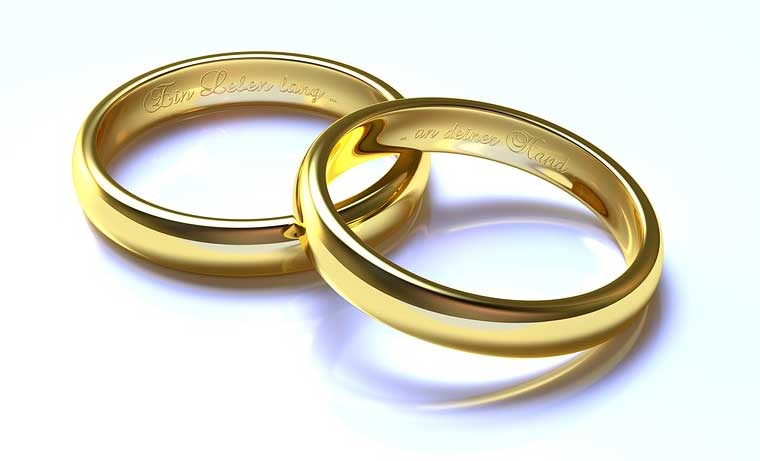Information About Gold
There are many different types of gold
If you are buying jewelry or selling your jewelry of putting up pieces of Jewelry for security for cash loans, you should know the different types of gold there are different colours, gold is valued in gold karats, and there are gold plating options. Here is some information for you to learn about to learn about gold and it’s characteristics.
Gold colors
Most Gold jewellery is not pure gold. It is a man made alloy; using mixture of metals. Gold jewellery can be a mixture/alloyed with silver, copper, zinc, palladium, and nickel to create different gold colours. Of which the most used gold colours are: yellow, white, rose, and green.


Yellow gold colour

White gold colour

Rose gold colour

Green gold colour
Gold carats
Carats are the standard or unit of measurement by what Gold is valued and is also spelt Karats
When buying gold jewellery, all “real” gold will have the karat mark ”k”. The karat mark/stamp will tell you how much gold content is contained in the jewellery you are considering. There should also be manufacturer’s trademark stamped next to the karat mark. The trademarking is there to assure you that the karat mark is accurate.
100% pure gold is marked as “24k”. It is unusual to find a “24k” mark on a jewellery because gold of this purity is a soft metal and is likely to scratch and bend. Gold in jewellery is mostly mixed with other metals as above to make it stronger, more durable. In the USA most likely mark that is “14k” because it is the most commonly used type of gold in jewellery.
In Australia Gold filled jewellery, is made up of a solid layer of gold bonded with heat and pressure to other metals such as silver, copper and brass. Some of these high quality gold filled pieces look the same appearance 9 carat Gold. When the Gold layer is 9 carat in purity then the minimum layer of Gold in an item stamped GF must = at least 1/20 the weight of the total item ( Applies in Australia). In Australia the most common gold stamps found on Gold filled jewellery are 1/20 9ct GF. Other jewellery products are made with sterling silver as the base although brass is more commonly used.
The different types of GOLD PLATING
To determine the quality of the pieces of jewellery you are considering look for a quality stamp on the metal to see what type of gold coating piece. With no quality stamp on the piece you will not know the type of gold used; if the jewellery is gold plated, rolled gold plated, or gold filled. The types of gold plating options are listed below with a description of each process.
GOLD LAYERED
Gold layered jewellery varies greatly and could have a super thin gold layer.
GOLD LEAF
Gold leaf has been hammered by hand by craftsmen into very thin layers and the wrapped/glided around the metal. Gold leaf jewellery is recognizable by the irregularities of the foil surrounding the item.
GOLD PLATED – GOLD ELECTROPLATED
If the jewellery is “gold plated” it means that there is a very thin layer of gold on the surface of the metal. The base metal can be stainless steel or brass dipped with gold. Gold plating is a process known as electroplating that gives the jewel a gold-like appearance. This “ gold” metal must have a stamp which indicates plated quality
GOLD OVERLAY – ROLLED GOLD PLATED
A “gold overlay” or “rolled gold plated” piece of jewellery has a thicker gold coating and is thus more durable. The base metals can be, stainless steel, copper or brass. This process uses heat and pressure to mix and bond the metals. A gold overlay or rolled gold plated jewellery must have a stamp indicating plated quality.
GOLD FILLED
See above
VERMEIL
Vermeil is pronounced ver.-may meaning “gold plated sterling silver”. The difference between “vermeil” and “gold plated/filled”, is that gold vermeil jewellery has a thicker gold layer and uses sterling silver as its base metal. This is why vermeil is a better choice whencompared to other gold plated jewellery pieces if you skin allergies. Vermeil is not always marked, but if gold jewellery is marked with a “925” stamp, it is likely to be gold vermeil.
Gold Filled Jewellery in Australia
Gold filled jewellery pieces with daily wear, can last 10 to 30 years but will eventually wear through. The gold layer on gold plated jewellery varies sharply dependent on the manufacturer, and country of origin so its is virtually impossible to compare some seemingly like pieces of gold jewellery. Gold filled items are 50 to 100,000 times thicker than normal Gold plating, and 17 to 25,000 times thicker than heavy Gold electroplate.
- Gold filled jewellery looks like solid Gold jewellery, but doesn’t have the same high price tags.
- A thick layer of copper or silver is underneath the Gold to strengthen the jewellery piece.
- By law in Australia, Gold filled has 1/20th by weight layer of Gold permanently bonded over a core base metal.
Carat
The carat (ct) is a unit of mass equal to 200 mg (0.2 g; 0.007055 oz) and is used for measuring gemstones and pearls. The current definition, sometimes known as the metric carat, was adopted in 1907 at the Fourth General Conference on Weights and Measures, and soon afterwards in many countries around the world. The carat is divisible into one hundred points of two milligrams each. Other subdivisions, and slightly different mass values, have been used in the past in different locations.
In terms of diamonds, a paragon is a flawless stone of at least 100 carats (20 g).
The ANSI X.12 EDI standard abbreviation for the carat is CD.
Etymology
First attested in English in the mid-15th century, the word carat came from Italian carato, which came from Greek kerátion (κεράτιον) meaning carob seed (literally “small horn”) (diminutive of – keras, “horn”) and was a unit of weight though it was not likely used to measure gold in classical times. The Latin word for carat is siliqua. This common belief that carat derives from carob seeds stems from the assumption that the seeds had unusually low variability in mass.
However, one group of researchers has found that carob seeds in fact have typical variability compared to the seeds of other species.
This was not the only reason. It is said that, to keep regional buyers and sellers of gold honest, potential customers could retrieve their own carob seeds on their way to the market, to check the tolerances of the seeds used by the merchant. If this precaution was not taken, the potential customers would be at the mercy of “2 sets of carob seeds”. One set of “heavier” carob seeds would be used when buying from a customer (making the seller’s gold appear to be less). Another, lighter set of carob seeds would be used when the merchant wanted to sell to a customer.
In the past, each country had its own carat. It was often used for weighing gold. Starting in the 1570s, it was used to measure weights of diamonds.
